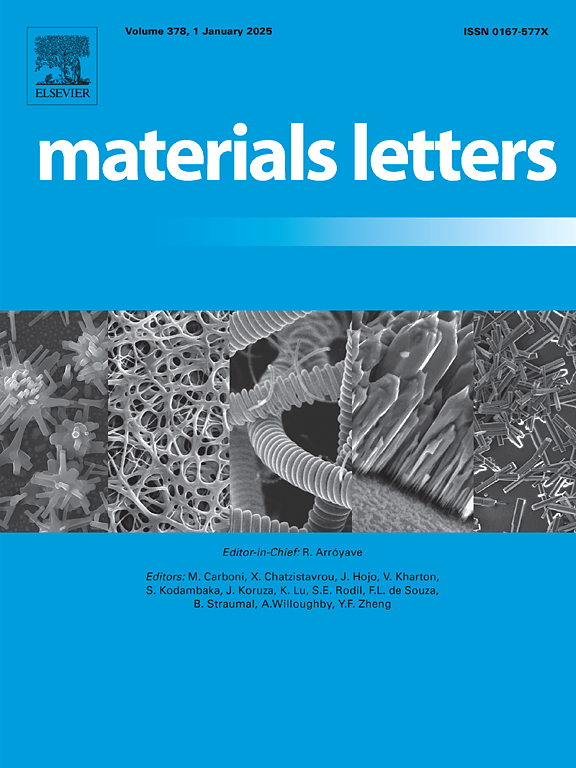碳纤维增强聚合物复合材料作为锂离子电池正极材料的研究
IF 2.7
4区 材料科学
Q3 MATERIALS SCIENCE, MULTIDISCIPLINARY
引用次数: 0
摘要
在这项研究中,提出了一种创新的工程方法,利用碳纤维增强聚合物(CFRP)复合材料修整过程中产生的废尘作为锂离子电池的负极材料。为此,采用低温煅烧法去除修整粉尘中的环氧渣。研究结果表明,聚合物树脂主要被消除,并且由于处理样品的高比表面积,在0.5C的速率下循环200次后,放电容量保持在378 mAh/g。本文章由计算机程序翻译,如有差异,请以英文原文为准。

Valorization of carbon fiber reinforced polymer composite trimming waste dust as anode material in lithium-ion batteries
In this study, an innovative engineering approach is presented to use waste dust generated during trimming of carbon fiber reinforced polymer (CFRP) composite as an anode material for Li-ion batteries. In this regard, a low temperature calcination process was applied to remove epoxy residues from trimming dust. The findings demonstrate that the polymer resin was predominantly eliminated, and thanks to the resulting high specific surface area of treated sample, a discharge capacity of 378 mAh/g was maintained after 200 cycles at a 0.5C rate.
求助全文
通过发布文献求助,成功后即可免费获取论文全文。
去求助
来源期刊

Materials Letters
工程技术-材料科学:综合
CiteScore
5.60
自引率
3.30%
发文量
1948
审稿时长
50 days
期刊介绍:
Materials Letters has an open access mirror journal Materials Letters: X, sharing the same aims and scope, editorial team, submission system and rigorous peer review.
Materials Letters is dedicated to publishing novel, cutting edge reports of broad interest to the materials community. The journal provides a forum for materials scientists and engineers, physicists, and chemists to rapidly communicate on the most important topics in the field of materials.
Contributions include, but are not limited to, a variety of topics such as:
• Materials - Metals and alloys, amorphous solids, ceramics, composites, polymers, semiconductors
• Applications - Structural, opto-electronic, magnetic, medical, MEMS, sensors, smart
• Characterization - Analytical, microscopy, scanning probes, nanoscopic, optical, electrical, magnetic, acoustic, spectroscopic, diffraction
• Novel Materials - Micro and nanostructures (nanowires, nanotubes, nanoparticles), nanocomposites, thin films, superlattices, quantum dots.
• Processing - Crystal growth, thin film processing, sol-gel processing, mechanical processing, assembly, nanocrystalline processing.
• Properties - Mechanical, magnetic, optical, electrical, ferroelectric, thermal, interfacial, transport, thermodynamic
• Synthesis - Quenching, solid state, solidification, solution synthesis, vapor deposition, high pressure, explosive
 求助内容:
求助内容: 应助结果提醒方式:
应助结果提醒方式:


